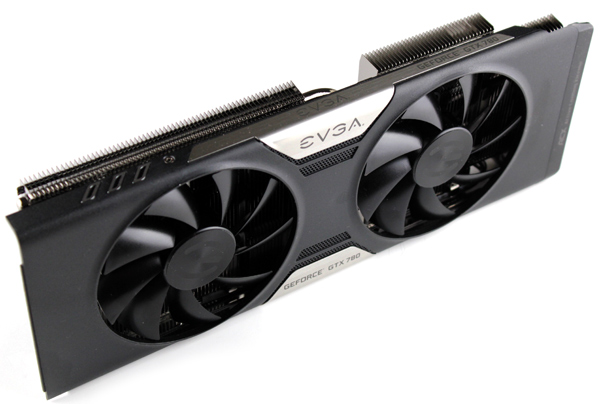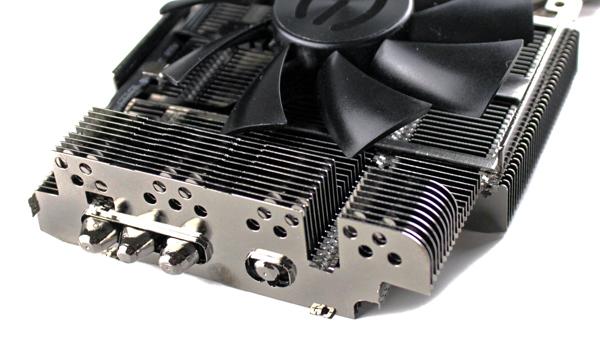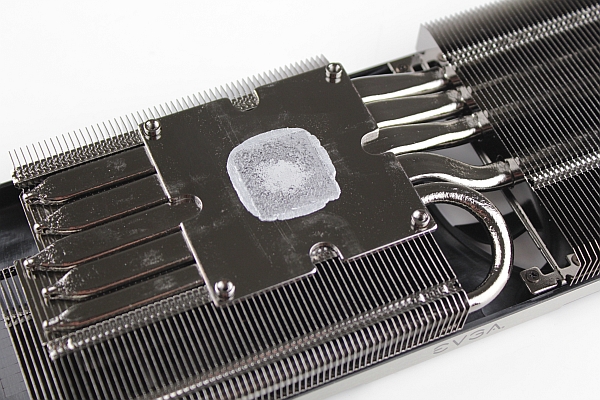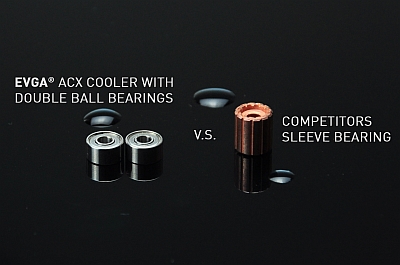Index
- EVGA GTX 780 Superclocked ACX reviewed
- The Packaging
- A closer look at ACX cooler
- A closer look at GTX 780 SC ACX
- Testbed
- Crysis 3
- Far Cry 3
- Hitman Absolution
- Metro 2033
- Sleeping Dogs
- Dirt Showdown
- Aliens vs Predator
- SniperEliteV2
- 3DMark 11
- 3DMark
- Unigine Valley
- Unigine Heaven
- Thermals, Noise, Consumption
- Overclocking
- Conclusion
- All Pages
EVGA is constantly working to improve its custom components and come up with cards capable of trumping the competition. More often than not, it pulls it off. Even in its reference form, the GTX 780 is a top notch card with a good cooler, but EVGA thinks it can do an even better job. To cool the GTX 780 EVGA came up with the ACX (Active Cooling Xtreme) cooler. Before we go into detail, let’s see how it looks. It is a dual-slot, dual-fan affair and it looks pretty mean.
Most non-reference GTX 680 coolers were 2.5- or 3-slot designs. EVGA used the dual-slot Classified cooler, but that cooler did not fit the reference PCB. With the ACX cooler EVGA took things to the next level, as it is perfect for enthusiasts keen to use the new card in three-way or four-way SLI setups.
EVGA designed a special heatsink with a lot of dissipation surfaces. The heatsink was designed in such a way to minimize airflow turbulence between the fans, with some clever air barriers in the design.
To maximize dissipation volume, EVGA used a few tricks, such as bigger fins at the sides of the cooler. Airflow channels provide better airflow and prevent pockets of hot air from creating. Of course, a bit of compressed air should be applied every once in a while to keep them clean.
The ACX cooler comes with five elaborate heatpipes.
The Power Logic PLA09215B12H fan has some good features. A bad blade design generates more noise, much like poorly designed screws on nuclear subs create cavitation and help Soviet sono-buoys locate Sean Connery and his crew. However, this particular 9-blade fan seems to be up to the job.

EVGA says that the blades are up to 700% more rigid than fan blades used in competing fans, which also results in a 25% weight reduction. We wanted to check it out for ourselves and sure enough the blade s feel very strong indeed.
The fan uses a double ball bearing design. The noise generated by bearing designs tends to be very low, at least when they are new. However, since this fan uses two ball bearings it should last a bit longer and generate a lot less noise even after a couple of years.
This is what the bearings look like in real life, opposed to standard sleeve bearings used in most fans.
EVGA tests show that the ACX fan is about 15 percent quieter than the reference fan, but at the same time it keeps the GPU 15 percent cooler. We put the claim to the test and we are happy to report that it is spot on.
